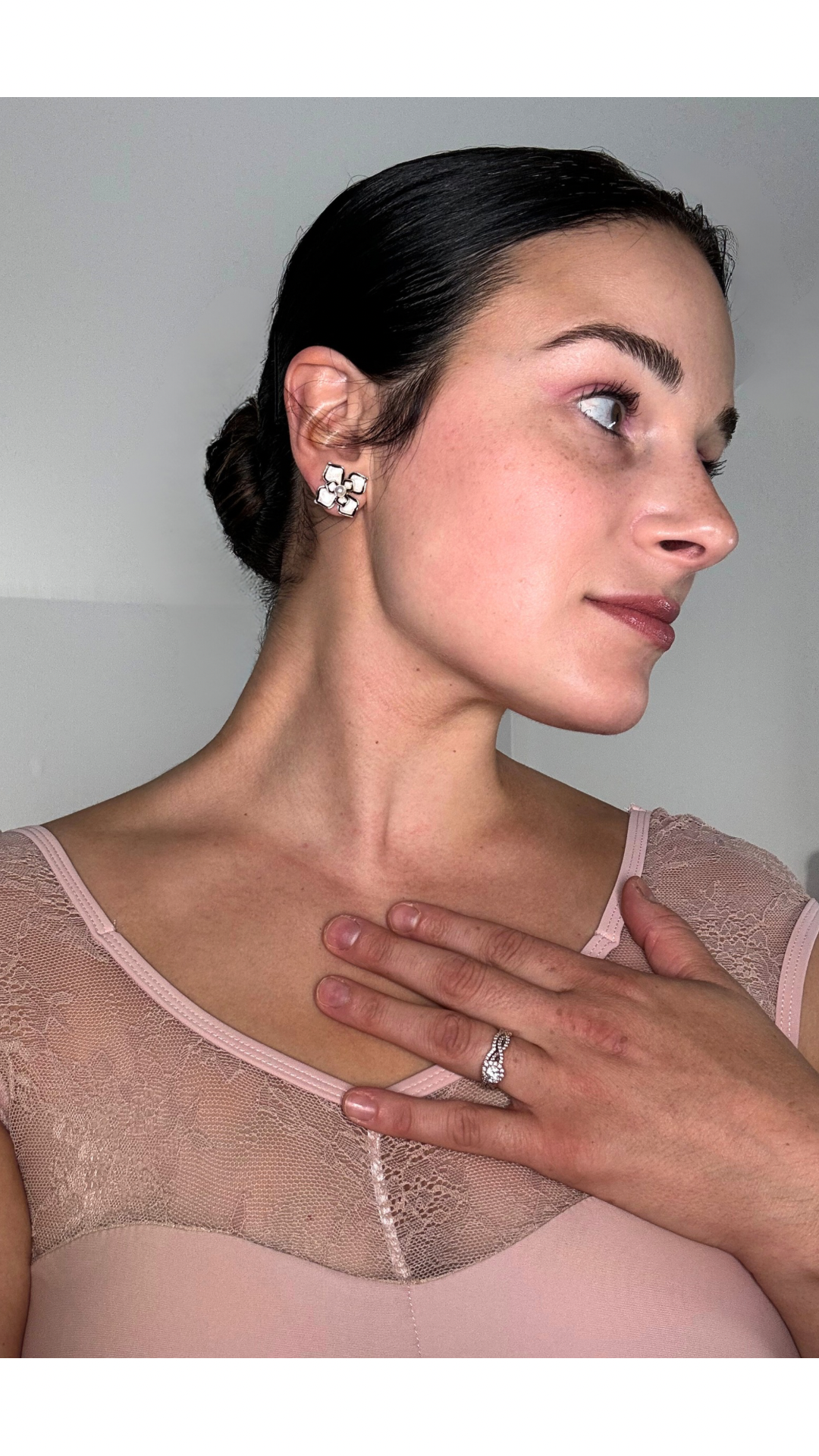Sharpen Your Spot: How Visual Tracking Exercises Can Elevate Your Turns
- Veronica K

- Apr 6, 2024
- 3 min read
Updated: May 14, 2024
For dancers, a flawless pirouette or a powerful fouetté isn't just about strength and technique – it's about mastering the art of spotting. Spotting, the act of quickly focusing on a fixed point during a turn, allows dancers to maintain balance and control while executing rotations. But how can we train our eyes to become more efficient at spotting? While static passé holds and single-leg balance routines are valuable tools, incorporating visual tracking exercises can significantly enhance your spotting ability.
Why Visual Tracking Matters
Dance is a visually demanding activity. Dancers rely on their visual system to track spatial relationships, anticipate movements, and react to their environment (Rosenstein & Bardy, 2010). Visual tracking, the ability to follow a moving object with your eyes, plays a crucial role in spotting. Studies have shown that deficiencies in visual tracking can lead to difficulties in maintaining balance during turns (Putman et al., 2010).
Here's how visual tracking aids spotting:
Improved Saccades: Saccades are the rapid eye movements that shift your gaze from one point to another. Effective spotting involves precise saccades towards the chosen spot during a turn (McIntyre et al., 2013). Visual tracking exercises train your eyes to make these quick and accurate shifts.
Enhanced Peripheral Vision: During a pirouette, dancers need to maintain awareness of their surroundings while focusing on the spotting point. Visual tracking exercises that involve following multiple moving objects can improve peripheral vision, allowing dancers to stay oriented in space (Ball & Tillman, 2010).

Beyond the Studio: Visual Tracking Training Techniques
Traditionally, spotting practice often involves holding a passé or arabesque pose while turning your head. While this is a good starting point, here are some more dynamic and engaging visual tracking exercises specifically designed to enhance spotting:
Partnered Pendulum Track: Stand facing a partner holding a weighted object (like a sock filled with beans). Your partner swings the object in a large arc pattern, and you track the movement with your eyes while maintaining a single leg balance pose. Switch roles after a set number of repetitions.
Mirror March with Focus Shifts: Stand facing a mirror and walk heel-to-toe in a straight line. Every few steps, quickly shift your focus from a point directly in front of you to a point on your reflection in the mirror and back again.
Number Maze: Create a large grid on the floor with numbers written in each square. Stand at one end of the grid and call out a random number sequence. While walking heel-to-toe on the grid, quickly locate each number with your eyes and take a small step on that square before moving to the next.
Progression: Increase the difficulty of these exercises by incorporating head turns, changing the speed of the moving object, or closing one eye.
Visual tracking exercises offer a dynamic and effective way to improve your spotting ability. By incorporating these techniques into your training routine alongside traditional spotting practice, you can enhance your eye movements, peripheral vision, and overall balance, leading to more confident and controlled turns. Remember, consistency is key! Aim to practice visual tracking exercises a few times a week to see a noticeable improvement in your spotting and take your pirouettes and fouettés to the next level.
Take Your Turns and Spotting to the Next Level
The techniques explored here provide a strong foundation for enhancing your spotting and turn execution. However, for dancers seeking to truly elevate their pirouettes and fouettés, there's more to explore. My comprehensive Turns & Balance Course delves deeper, going beyond practicing pure technique.
This course dives into the crucial aspects that underpin exceptional turning:
Stability Training: We'll explore exercises that target the core, ankles, and overall body alignment, creating a rock-solid foundation for controlled turns.
Visual Acuity Enhancement: The course incorporates advanced visual tracking drills designed to further sharpen your eye movements and peripheral vision, leading to more precise spotting.
Neuromuscular Connection Optimization: We'll explore exercises that bridge the gap between your brain and body, fostering a stronger neuromuscular connection for more efficient and powerful turns.
By addressing these pillars alongside traditional technique training, the Turns & Balance Course equips you with a holistic approach to mastering your turns. Ready to take your pirouettes and fouettés to new heights? Sign up for the Turns & Balance Course today and unlock the full potential of your artistry!
Reference List:
Ball, K., & Tillman, D. (2010). Peripheral vision and balance control in athletes. Journal of Sports Sciences, 28(8), 881-889. https://europepmc.org/article/med/31205229
McIntyre, S. M., Richardson, A. M., & Dufresne, S. H. (2013). Gaze behavior during dance pirouettes: the influence of expertise. Journal of Motor Behavior, 45(2), 147-154. https://journals.sagepub.com/doi/pdf/10.12678/1089-313X.061522d
Rosenstein, J. M., & Bardy, B. G. (2010). The neuroscience of dance. Neuroscientist, 16(2), 167-176. https://hms.harvard.edu/news-events/publications-archive/brain/dancing-brain
Putnam, C. A., He, J., & Mitchell, C. J. (2010).




Comments